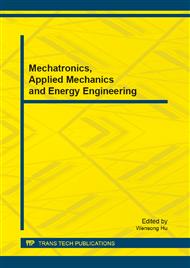p.92
p.96
p.101
p.108
p.115
p.121
p.128
p.134
p.140
A Numerical Study of the Turbulent Flow over a Cylinder close to Moving Plane
Abstract:
Two-dimensional numerical simulations are performed to analyze the turbulent flow over a circular cylinder close to a moving plane. This flow receives interference from the plane boundary layer, being this effect identified by recirculation zones close to the wall and slight difference in pressure distribution around cylinder. URANS equations and SST modeling are employed to calculate velocity and pressure field. The simulation was performed by a finite element projection scheme. Four distances between the cylinder and the plane are analyzed by the SST model. The SST results showed the generation and development of vortex shedding. Lift and drag coefficients show the flow oscillatory pattern. All results are similar with other numerical results at the literature.
Info:
Periodical:
Pages:
115-120
Citation:
Online since:
September 2013
Price:
Сopyright:
© 2013 Trans Tech Publications Ltd. All Rights Reserved
Share:
Citation:


